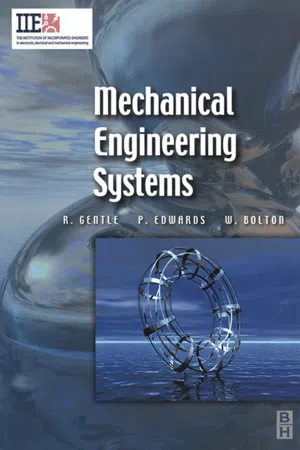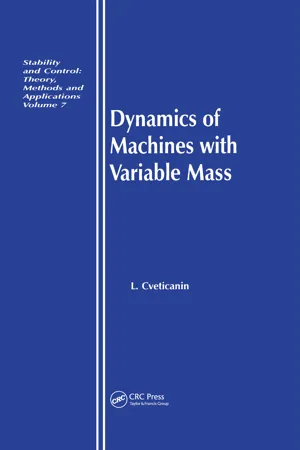Mathematics
Integrals of Motion
Integrals of motion in mathematics refer to quantities that remain constant over time in a dynamic system. These integrals are derived from the equations of motion and provide valuable insights into the behavior and properties of the system. They are essential for understanding the dynamics and stability of physical and mathematical systems.
Written by Perlego with AI-assistance
Related key terms
4 Key excerpts on "Integrals of Motion"
- eBook - ePub
- Fletcher Dunn, Ian Parberry(Authors)
- 2011(Publication Date)
- A K Peters/CRC Press(Publisher)
Riemann integrals are usually not directly solvable in the same way that derivatives are. They are used to recognize when the problem we are solving is an integral, and to help set up the integral properly. It’s also how we solve them numerically (we have not yet discussed the details of how to do this).The fundamental theorem of calculus says that integration and differentiation are inverse operations. On paper, definite integrals are computed by looking for an antiderivative, not by evaluating the Riemann integral at the limit. A function whose argument defines the upper limit of integration will be an antiderivative of the integrand.An indefinite integral is a function that is an antiderivative of the integrand. A definite integral produces a number representing the continuous summation of the integrand over the interval identified by the limits of integration. A definite integral can be calculated by evaluating any antiderivative at the starting and ending points, and taking the difference between these two values (by subtracting the value at the start of the interval from the value at the end of the interval). An indefinite integral is actually a definite integral where the limits of integration are implied.11.8 Uniform Circular Motion
Enough calculus—let’s get back to physics. This section studies the motion of a particle moving in a circle at a constant speed. We study the motion of a particle because many physics calculations can be simplified by representing a rigid body as a point mass at its so-called center of mass. Since a circular path is inherently restricted to a plane, Section 11.8.1 begins our investigation in two dimensions. After establishing the basic relations, Section 11.8.2 shows how to apply these in a world where the plane of orbit is arbitrarily oriented in three dimensions.11.8.1 Uniform Circular Motion in the Plane
A particle traveling in a circle with constant speed does not have constant velocity; if it did, it would travel in a straight line. Since the object’s velocity is changing over time, it must be under some sort of acceleration. Let’s see if we can determine what that is. Consider an object moving at constant speed s in a circular path of radius r . To make our calculations easier, and without loss of generality, we establish a two-dimensional reference frame that lies in the plane of motion and has its origin at the center of the circle. Remember that the instantaneous velocity v (t ) of a particle is always tangent to its trajectory, so the velocity vector at any given point will always be tangent to the circle at that point. Also, from the definition of speed, we know that ∥v (t )∥ = s - eBook - ePub
- Richard Gentle, Peter Edwards, William Bolton(Authors)
- 2001(Publication Date)
- Newnes(Publisher)
4Dynamics
SummaryThis chapter deals with movement. In the first part the movement is considered without taking into account any forces. This is a subject called kinematics and it is important for analysing the motion of vehicles, missiles and engineering components which move backwards and forwards, by dealing with displacement, speed, velocity and acceleration. These quantities are defined when we look at uniform motion in a straight line. This subject is extended to look at the particular case of motion under the action of gravity, including trajectories. This chapter also looks at how the equations of motion in a straight line can be adapted to angular motion. Finally in the first half the subject of relative velocity is covered as this is very useful in understanding the movement of the individual components in rotating machinery.In the second part of this chapter we consider the situation where there is a resultant force or moment on a body and so it starts to move or rotate. This topic is known as dynamics and the situation is described by Newton’s laws of motion. Once moving forces are involved, we need to look at the mechanical work that is being performed and so the chapter goes on to describe work, power and efficiency. Newton’s original work in this area of dynamics was concerned with something called momentum and so this idea is also pursued here, covering the principle of conservation of momentum. The chapter extends Newton’s laws and the principle of conservation of momentum to rotary motion, and includes a brief description of d’Alembert’s principle which allows a dynamic problem to be converted into a static problem. - eBook - ePub
- L Cveticanin(Author)
- 2022(Publication Date)
- Routledge(Publisher)
Let us derive the differential equation of motion for rigid bodies. The rigid body can be thought as consisting of an infinite number of particles with an elementary mass d m. In that case, the summation signs in (2.2.8) and (2.2.19) must be replaced by integration signs, thus leading to ∫ m d 2 r → d t 2 d m = F → + R →, (2.3.1) ∫ m r → d 2 r → d t 2 d m = M → 0 F → + M → 0 R →, (2.3.2) where the integration is over the entire mass of the body. The eqs. (2.3.1) and (2.3.2) can be written in a more suitable form if we use the concept of centre of mass. The centre of mass of the rigid body is defined in the inertial frame S (see Fig. 2.3.1) by r → C = 1 m ∫ m r → d m, (2.3.3) A noninertial frame S′ is fixed to the body in C and moves with the body with respect to S. The motion consists of translational and rotational motion, the latter with angular velocity Ω →. The position of v -th point of the body with respect to the centre of mass is r → = r → C + ρ →, (2.3.4) where the position vector of point v according to the centre of mass is ρ → = x e → x + y e → y + z e → z, (2.3.5) where e → x, e → y, e → z are the unit vectors in the reference frame S′. The time derivative of the vector ρ → is d ρ → d t = d x d t e → x + d y d t e → y + d z d t e → z + x d d t e → x + y d d t e → y + z d d t e → z. Due to the fact that the noninertial frame has a plane motion the unit vectors change their positions in time and their time derivatives. are d e → x d t = Ω → × e → x, d e → y d t = Ω → × e → y, d e → z d t = Ω → × e → z, where Ω → is the angular velocity of rotation. It means that d ρ → d t = d ρ → r d t + Ω → + ρ →, (2.3.6) where d ρ → r d t = d x d t e → x + d y d t e → y + d z d t e → z. If we differentiate eq. (2.3.4) with respect to time and use the eq - eBook - ePub
- Michael M. Mansfield, Colm O'Sullivan(Authors)
- 2020(Publication Date)
- Wiley(Publisher)
4 Motion in two and three dimensionsAIMS
- to show how, in two and three dimensions, physical quantities can be represented by mathematical entities called vectors
- to rewrite the laws of dynamics in vector form
- to study how the laws of dynamics may be applied to bodies which are constrained to move on specific paths in two and three dimensions
- to describe how the effects of friction may be included in the analysis of dynamical problems
- to study the motion of bodies which are moving on circular paths
4.1 Vector physical quantities
The material universe is a three‐dimensional world. In our investigation of the laws of motion in Chapter 3 , however, we considered only one‐dimensional motion, that is situations in which a body moves on a straight line and in which all forces applied to the body are directed along this line of motion. If a force is applied to a body in a direction other than the direction of motion the body will no longer continue to move along this line. In general, the body will travel on some path in three‐dimensional space, the detail of the trajectory depending on the magnitude and direction of the applied force at every instant. Equation (3.3) as it stands is not sufficiently general to deal with such situations, for example the motion of a pendulum bob (Figure 4.1 ) or the motion of a planet around the Sun (Figure 4.2 ). Newton's second law needs to be generalised from the simple one‐dimensional form discussed in Chapter 3 .A pendulum comprising a mass attached to the end of a string; the mass can move on a path such that the distance from the fixed end of the string remains constant.Figure 4.1A similar problem arises if two or more forces act on a body simultaneously, for example when a number of tugs are manoeuvring a large ship (Figure 4.3
Learn about this page
Index pages curate the most relevant extracts from our library of academic textbooks. They’ve been created using an in-house natural language model (NLM), each adding context and meaning to key research topics.



